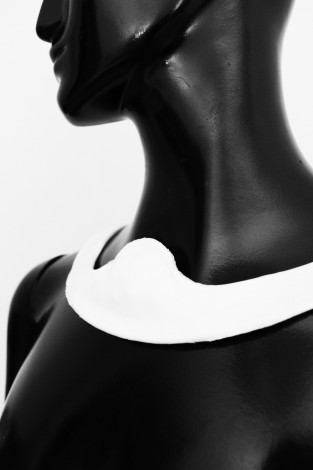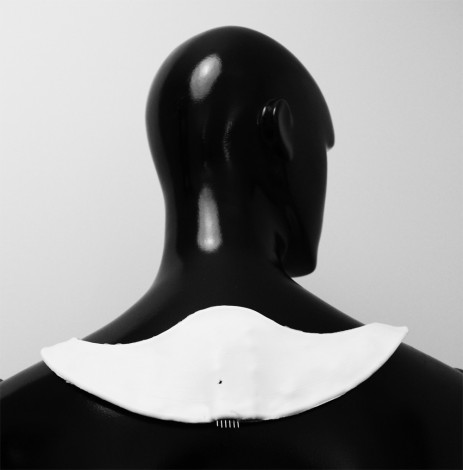feelable 10
«feelable» – How does my voice feel on my skin?
«feelable» is both an experiment and an exploration. The project began with the idea of developing an object that would translate the human voice into feedback perceptible on the skin. On the one hand, exploring and testing the technical possibilities existing at the interface of product design, medical equipment, electronics, and electrical engi- neering has resulted in a functional prototy- pe. On the other, the project has opened up various possibilities for practical application and embedding in theory that can now be further developed. «feelable» has offered both theoretical and practical insights, which are instructive for both teaching and learning. How does my voice feel on my skin?
What is «feelable»? Object and Technology
«feelable» translates the human voice into a perceptible feedback, very much along the lines of Marshall McLuhan’s seminal insight that «when information comes into contact with information, the outcomes are surprising and impressive.»
«feelable» is worn on the body. It consists of a latex skin, into which the entire technology has been cast . Its organic shape adapts to its wearers’ specific ergonomics. The selected fabric meets fitting and skin- compatibility requirements.
«feelable» technology comprises a sensor, electronics, and an actuator. The sensor is a microphone capable of measuring the acoustic pressure of the voice. These read- ings are subsequently digitised and trans- lated into a signal capable of steering the actuators (see Fig. 4). Six to eight miniature vibrating motors are used as actuators. Thus, «feelable» hybridises both technology and the human body.
What can «feelable» do? Applications and Results
On a first level, a person wearing «feelable» can quite simply feel their own voice on their skin. Human skin has specialised receptors, which can be activated by mechanical stimuli like extension and pressure. These mechan- oreceptors are primary sensory cells. These cells are activated and the wearer receives tactile feedback via the actuators. In this sense, «feelable» is a kind of toy that renders tangible the effect of the human voice. Nor- mally, we are oblivious to this effect or it lies concealed in early childhood or even in pre- natal experience.
On a second level, «feelable» will be displayed as an art object within the context of an ex- hibition. Exhibition visitors can try out the object, which offers a new sensory experience. Vistors who put on and test «feelable» can communicate with and observe themselves in three mirrors while entering into dialogue with other exhibition visitors.
On a third level, a further process will attempt to embed «feelable» in current theory. «feelable» is well suited to disclosing partial blind spots of various current theoretical discourses:
The theory of sensory perception focuses on touch and on our largest sensory organ, the skin. The skin thereby becomes a perceptib- le physical communication instrument. Communication theory blinds out only too all often the voice (not language), our first and most fundamental communication tool. By allowing speakers to feel their own voice, «feelable» makes that tool perceptible. Social theory could rethink the I-we relation- ship. As the French philosopher Jean-Luc Nancy observes, being singular is impossib- le without conceiving of a «we». However, this «we» becomes possible only by adopt- ing a critical distance to oneself. «feelable» establishes a new approach to this complex I-we relationship, and sharpens perception by means of physical experience.
On a fourth level, the project has conceivable practical applications in medicine, therapy, or the game industry. Possible cooperation partners include the Department of Psycho- logy at the University of Zurich, the speech theory unit at Zurich University Hospital, and the ZHdK Game Design and Interaction Design programmes. Preliminary discussi- ons have shown that such applications are possible and that further exploration will be undertaken.

